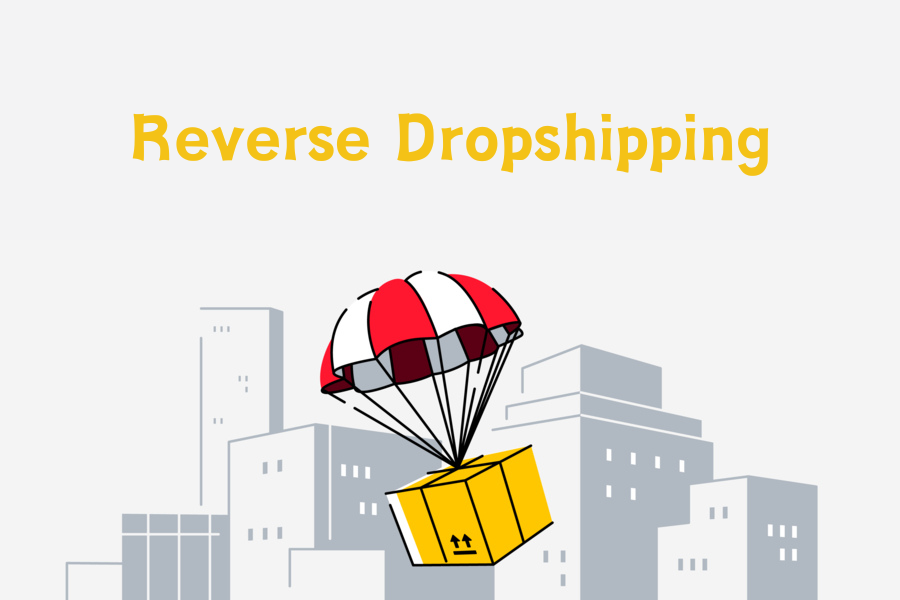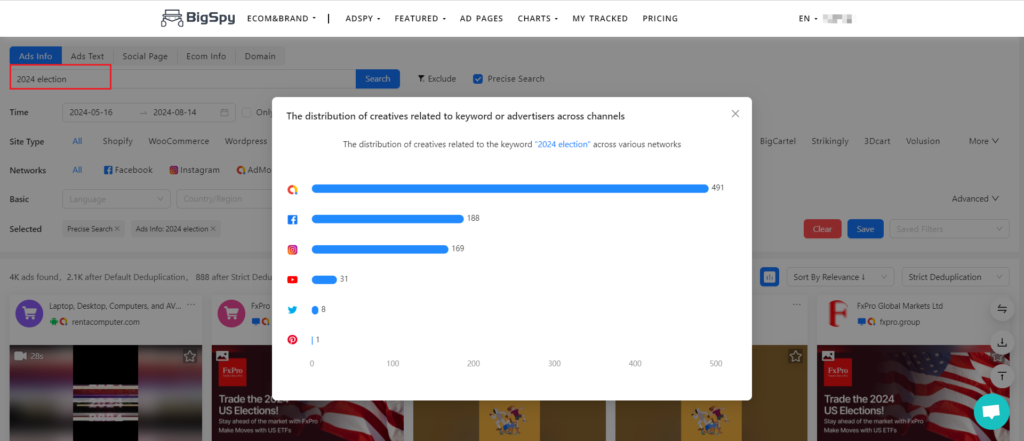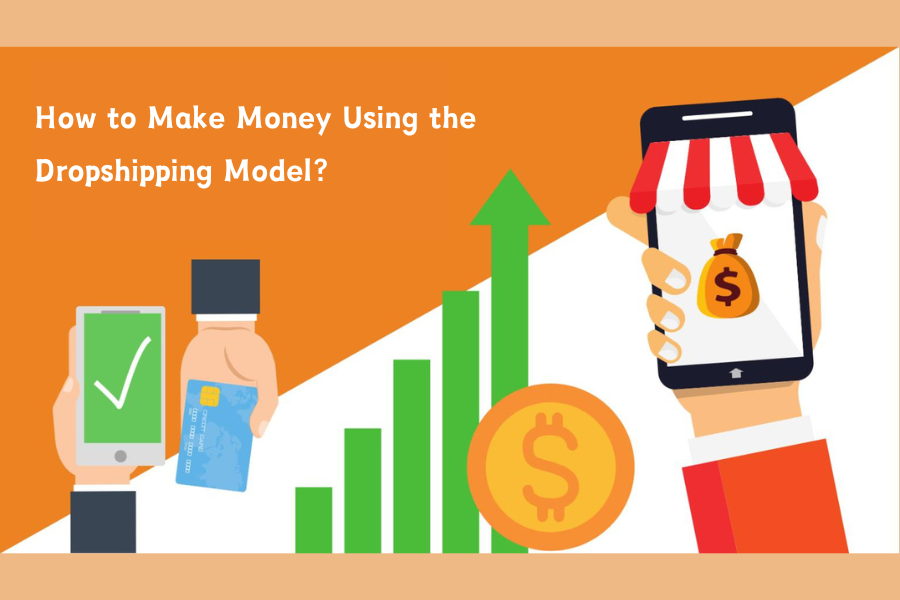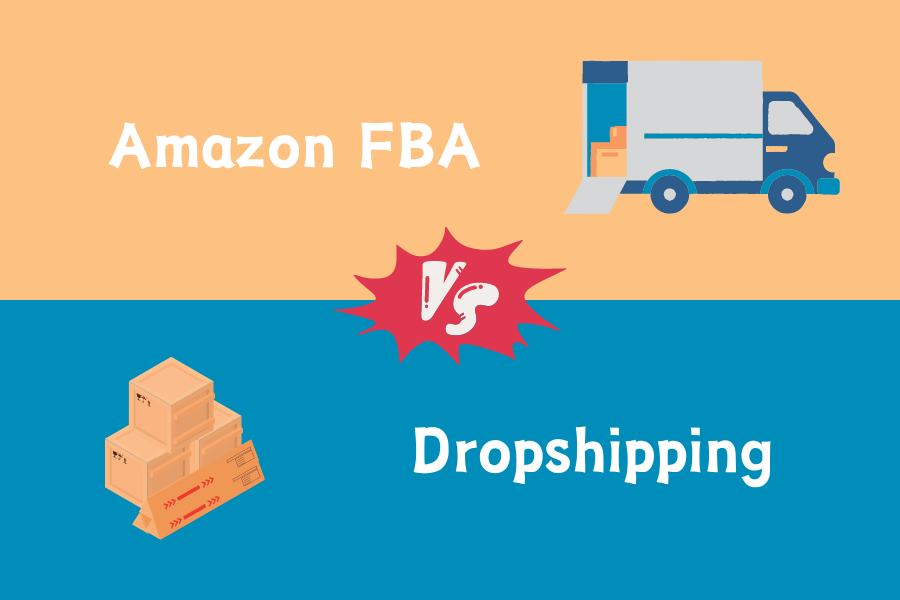
What is E-commerce?
E-commerce, short for Electronic Commerce, refers to the buying and selling of goods and services over the Internet. E-commerce encompasses various forms, including online shopping, online payment, and electronic transactions. It includes multiple business models such as Business to Business (B2B), Business to Consumer (B2C), and Consumer to Consumer (C2C). E-commerce allows buyers and sellers to conduct transactions electronically, overcoming geographical boundaries. It is characterized by convenience, low cost, high efficiency, and global reach. With the development of internet technology and changes in consumer shopping habits, e-commerce has grown rapidly worldwide, profoundly impacting traditional business models.
History of E-commerce
The history of e-commerce dates back to the 1970s with the advent of Electronic Data Interchange (EDI) technology, which enabled businesses to exchange commercial documents such as purchase orders and invoices electronically. This was an early form of e-commerce. In 1990, Tim Berners-Lee invented the World Wide Web, laying the foundation for the modern Internet. In 1994, the first web browser, Netscape Navigator, appeared, promoting the widespread adoption of the internet. That same year, Amazon emerged as one of the first online bookstores globally, and eBay followed in 1995 as one of the first online auction and shopping sites. These were key stages in early e-commerce, and with the subsequent development and rise of e-commerce platforms and payment systems, the e-commerce industry has continually evolved, not only changing traditional business models but also promoting global trade growth, creating numerous jobs, and generating economic value.
Types of E-commerce Businesses

E-commerce businesses can be categorized based on the transaction parties and objects. Here are some major types of e-commerce businesses:
1. Business to Business (B2B)
B2B e-commerce involves transactions between businesses, typically involving bulk purchasing, wholesale transactions, and supply chain management.
- Examples: Alibaba.com, Global Sources
4. Consumer to Business (C2B)
C2B e-commerce involves consumers offering products or services to businesses, often through bidding or group buying. This type of model is less common but has applications in certain areas, such as the sale of photographic works and consumer feedback services.
- Examples: 99designs (design contests), Groupon (group buying)
5. Mobile Commerce (M-commerce)
M-commerce involves conducting e-commerce activities through mobile devices such as smartphones and tablets. Mobile e-commerce includes various models such as B2B, B2C, and C2C.
- Examples: Shopping via mobile apps like Taobao, Amazon Mobile
7. Cross-border E-commerce
Cross-border e-commerce involves international trade conducted over the Internet, allowing consumers to purchase goods from other countries.
- Examples: AliExpress, Amazon Global
9. On-demand E-commerce
On-demand e-commerce provides goods or services based on immediate consumer needs, typically through mobile apps. This model is commonly seen in fields such as transportation and food delivery.
- Examples: Uber, Didi Chuxing, Meituan Delivery
These business types can be further segmented and innovated based on market demand and technological advancements. As internet technology continues to progress, e-commerce business models are constantly evolving to adapt to consumer needs and market changes.
Types of E-commerce Revenue Models
E-commerce revenue models are diverse and primarily depend on the business type, target market, and operational strategy. These revenue models can be used individually or in combination, based on the e-commerce platform's business model and market demands. Diversifying revenue sources allows e-commerce platforms to better adapt to market changes and achieve sustainable growth.

Below are some common e-commerce revenue models:
1. Sales of Goods or Services
This is the most direct and common revenue model where e-commerce platforms generate income by selling goods or services.
- Retail Sales: Directly selling products to consumers.
- Wholesale Sales: Selling products to other businesses.
- Examples: Amazon, JD.com
2. Commission Income
E-commerce platforms provide sales channels for third-party sellers and earn a commission from each transaction.
- Examples: Taobao, eBay
3. Advertising Revenue
E-commerce platforms generate income by displaying advertisements. Advertisers pay to promote their products or services on the platform.
- Examples: Alibaba, JD.com
4. Membership Programs
E-commerce platforms generate revenue through membership services, offering members special discounts, priority services, etc.
- Examples: Amazon Prime, JD Plus
6. Data Service Revenue
E-commerce platforms generate income by analyzing user data and offering market analysis, consumer behavior predictions, and other services.
- Examples: Alibaba Cloud, Amazon Web Services (AWS)
7. Logistics and Delivery Service Revenue
E-commerce platforms generate revenue by providing logistics and delivery services, especially with a well-established self-operated delivery system.
- Examples: Amazon Logistics, JD Logistics
8. Sales of Virtual Goods and Services
E-commerce platforms generate income by selling virtual goods or services, such as in-game purchases, online courses, and digital content.
- Examples: Apple App Store, Google Play Store
9. On-Demand Service Revenue
Providing on-demand services such as transportation and food delivery, and charging based on usage.
- Examples: Uber, Didi Chuxing, Meituan Waimai
10. Affiliate Marketing
E-commerce platforms earn commissions by promoting products or services of other companies through successful referral transactions.
- Examples: Amazon Associates
11. Supply Chain and Inventory Management Services
E-commerce platforms generate revenue by offering supply chain and inventory management services to small and medium-sized enterprises.
- Examples: Shopify Fulfillment Network
12. Crowdfunding and Pre-sales
Through crowdfunding platforms, products are pre-sold, and consumers pay in advance, providing funds for the company to produce and deliver the products.
- Examples: Kickstarter, Indiegogo
Advantages and Disadvantages of E-commerce
E-commerce has become an essential part of modern business due to its broad market reach, cost-effectiveness, and convenience. However, it also faces challenges such as lack of physical experience, intense market competition, and logistics issues. Successful e-commerce companies need to continuously optimize their operational strategies, enhance user experience, and stay technologically advanced to cope with market changes and competitive pressures.

Advantages
Broad Market Reach
- Global Market: E-commerce can easily transcend geographical boundaries, reaching global consumers.
- 24/7 Operation: E-commerce platforms operate around the clock, allowing consumers to shop anytime.
Cost-effectiveness
- Lower Operating Costs: No physical store rent and maintenance fees, relatively lower employee costs.
- Economies of Scale: Large-scale purchasing and selling can reduce costs and increase profit margins.
Convenience and Flexibility
- Convenient Shopping: Consumers can shop from home using computers or mobile phones without the time and location constraints.
- Diverse Choices: E-commerce platforms offer a wide variety of goods, making it easy for consumers to compare and choose.
Data-driven Decisions
- Data Analysis: E-commerce platforms can collect and analyze large amounts of user data, helping businesses optimize marketing strategies, inventory management, and customer service.
- Personalized Recommendations: Platforms can provide personalized shopping suggestions based on data analysis, increasing user satisfaction and sales conversion rates.
Efficient Marketing
- Precision Marketing: Using SEO, social media advertising, and email marketing, e-commerce can more accurately reach target customers.
- Flexible Promotions: Prices can be quickly adjusted, and promotional activities can be launched in response to market demand.
Disadvantages
Lack of Physical Experience
- No Touch and Try: Consumers cannot physically feel the quality, material, and size of the goods, potentially affecting purchasing decisions.
- Delayed Gratification: Consumers need to wait for goods delivery and cannot obtain the goods immediately.
Intense Competition
- Price Wars: Due to intense competition in the e-commerce market, price wars are common, potentially leading to reduced profits.
- Market Saturation: Some e-commerce markets may be highly saturated, posing significant challenges for new entrants.
Logistics and Delivery Challenges
- High Logistics Costs: Delivery costs are high, especially for cross-border e-commerce, with higher logistics fees and longer delivery times.
- Delivery Issues: Logistics delays, losses, or damages may affect consumer experience.
Security and Trust Issues
- Cybersecurity: E-commerce platforms may face risks of data breaches and hacker attacks.
- Trust Issues: Consumers may have lower trust in online transactions, particularly with new platforms or unknown brands.
Dependence on Technology
- Technology Dependence: E-commerce platforms heavily rely on technology and internet infrastructure; technical failures can lead to significant losses.
- High Technology Update Costs: Continuous investment is needed for technology updates and maintenance, incurring high costs.
Legal and Regulatory Risks
- Legal Compliance: Different countries and regions have varying laws and regulations, and e-commerce platforms need to ensure compliance.
- Tax Issues: Cross-border e-commerce faces complex tax issues such as tariffs and value-added taxes.
Here is the English translation of the provided Chinese content:
Which sectors are suitable for developing e-commerce?

There are many sectors suitable for e-commerce development. Below are some prominent sectors that perform well on e-commerce platforms due to their product characteristics and market demand:
1. Clothing and Fashion
- Characteristics: Rich variety, fast-changing fashion trends, high consumer demand.
- Advantages: Easy to showcase products through images and videos; personalized recommendations are straightforward.
- Examples: Zara, H&M, Shein
2. Electronics
- Characteristics: High value, large demand, rapid technological updates.
- Advantages: Consumers often compare and search for electronics online; online sales provide detailed product information and user reviews.
- Examples: Apple, JD.com Electronics
3. Beauty and Skincare
- Characteristics: Diverse product types, high purchase frequency.
- Advantages: Online sales offer detailed usage instructions, ingredient descriptions, and user reviews, aiding consumer purchase decisions.
- Examples: Sephora, Meilishuo
4. Food and Beverage
- Characteristics: Broad demand, especially for health, specialty, and imported foods.
- Advantages: E-commerce platforms provide convenient ordering and delivery services, meeting diverse consumer needs.
- Examples: Hema Fresh, FreshDirect
5. Home Goods and Furniture
- Characteristics: Large items, complex purchase decisions.
- Advantages: Online platforms can display detailed product information, usage images, and user reviews, helping consumers make decisions.
- Examples: IKEA, Wayfair
6. Books and Media
- Characteristics: Wide variety, clear digital trend.
- Advantages: E-commerce platforms facilitate searching, recommending, and purchasing; digital content can be delivered instantly.
- Examples: Amazon, Dangdang
7. Health and Wellness Products
- Characteristics: Increasing consumer demand for health products.
- Advantages: Online platforms provide detailed product descriptions, user reviews, and professional advice.
- Examples: GNC, iHerb
8. Sports and Outdoor Equipment
- Characteristics: Highly specialized products, consumers value brands and quality.
- Advantages: E-commerce platforms can provide professional product introductions and usage guides, attracting specific consumer groups.
- Examples: Decathlon, Lululemon
9. Toys and Baby Products
- Characteristics: Diverse categories, consumers focus on safety and quality.
- Advantages: E-commerce platforms facilitate displaying product information, consumer reviews, and safety certifications.
- Examples: Toys "R" Us, Babyshop
10. Digital Content and Services
- Characteristics: No physical delivery required, instant consumption.
- Advantages: Digital content (e.g., e-books, music, videos, software) in download or streaming formats can instantly satisfy consumer needs.
- Examples: Spotify, Netflix, Kindle Store
11. Online Education and Training
- Characteristics: Rise of the knowledge economy, growing demand for remote education.
- Advantages: Online platforms offer flexible learning times and rich course resources.
- Examples: Coursera, Udemy, Xueersi Online School
12. Handicrafts and Art
- Characteristics: Uniqueness and personalization, clear market segmentation.
- Advantages: E-commerce platforms can promote niche handicrafts and art to global consumers.
- Examples: Etsy, Gong Mei Art
13. Home Renovation and Building Materials
- Characteristics: High-value products, long consumer decision cycle.
- Advantages: E-commerce platforms can provide detailed product information, installation guides, and user reviews, aiding consumer decisions.
- Examples: Lowe's, Home Depot
14. Pet Supplies
- Characteristics: Continuous market demand growth, pet owners prioritize quality and brands.
- Advantages: Online platforms offer a variety of pet food, toys, and care products, making it convenient for consumers to choose.
- Examples: Chewy, Petco
These sectors perform well on e-commerce platforms due to their ability to leverage online advantages, providing rich product information, convenient shopping experiences, and efficient delivery services. In the future, with technological advancements and evolving consumer demands, more sectors may find e-commerce development opportunities.
What are the top e-commerce platforms?

Top e-commerce platforms have extensive user bases and significant influence globally within their respective markets and sectors. Here are some leading e-commerce platforms:
1. Amazon
- Headquarters: United States
- Characteristics: The world's largest comprehensive e-commerce platform, offering a wide range of goods including books, electronics, clothing, and home goods. Amazon also provides Prime membership services covering fast shipping, video streaming, and other value-added services.
- Advantages: Global coverage, efficient logistics system, powerful cloud computing services (AWS).
2. Alibaba
- Headquarters: China
- Characteristics: The world's largest B2B e-commerce platform, connecting global buyers and Chinese manufacturers. Alibaba also operates multiple sub-platforms such as Taobao (C2C), Tmall (B2C), and AliExpress (cross-border e-commerce).
- Advantages: Large user base, efficient supply chain management, robust financial services (Alipay).
3. JD.com
- Headquarters: China
- Characteristics: One of China's largest B2C e-commerce platforms, known for its self-operated logistics and high-quality genuine products. JD.com has strong competitiveness in electronics, appliances, and daily necessities.
- Advantages: Self-operated logistics system, efficient delivery service, strict quality control.
4. eBay
- Headquarters: United States
- Characteristics: A globally renowned C2C and B2C e-commerce platform where users buy and sell new and used goods. Its auction mechanism and global market coverage provide unique advantages in second-hand goods trading.
- Advantages: Global market, auction, and immediate purchase functions, user feedback system.
5. Shopify
- Headquarters: Canada
- Characteristics: Provides website-building tools and services to help businesses and individuals establish and manage online stores. Shopify's ease of use and powerful features make it a preferred e-commerce platform for SMEs and independent merchants.
- Advantages: Flexible website building tools, rich application ecosystem, global payment solutions.
6. Etsy
- Headquarters: United States
- Characteristics: Focuses on handmade crafts, art, and vintage goods, providing a platform for global creative individuals to showcase and sell their work. Etsy attracts a large community of craft enthusiasts with its unique products and community atmosphere.
- Advantages: Unique product categories, creative community atmosphere, global buyer and seller network.
7. Rakuten
- Headquarters: Japan
- Characteristics: Japan's largest e-commerce platform, offering a variety of goods and services including electronics, clothing, beauty products, and travel services. Rakuten also has global business operations covering multiple countries.
- Advantages: Diverse product categories, strong member points system, global business expansion.
8. MercadoLibre
- Headquarters: Argentina
- Characteristics: The largest e-commerce platform in Latin America, covering multiple countries in the region and offering a wide range of goods from electronics to home goods.
- Advantages: Coverage of Latin American markets, localized services, and fintech support (MercadoPago).
9. Flipkart
- Headquarters: India
- Characteristics: One of India's largest e-commerce platforms, offering a wide range of goods from electronics and fashion to daily necessities. Flipkart has become a leader in the Indian e-commerce market through continuous innovation and market expansion.
- Advantages: Understanding of the local market, rapid growth, strong logistics network.
10. Walmart
- Headquarters: United States
- Characteristics: The world's largest retailer, integrating online and offline operations, offering a wide range of goods. Walmart provides a convenient online shopping experience and delivery services through its e-commerce platform Walmart.com.
- Advantages: Strong supply chain, global brand influence, online and offline integration.
These top e-commerce platforms dominate their respective markets globally through innovative business models, excellent user experiences, and robust technical support, continuously driving the development and transformation of the e-commerce industry.
How do I start an e-commerce business?

Starting an e-commerce business involves multiple steps, from market research to actual operations. Here is a detailed step-by-step guide to help you smoothly launch your e-commerce business:
1. Market Research and Product Selection
- Identify Target Market: Understand the customer demographics you wish to serve and analyze their needs and buying behaviors.
- Choose Products: Select products with market potential, considering market demand, competitive landscape, and profit margins.
Use BigSpy for market research to discover trending products!
2. Develop a Business Plan
- Business Model: Determine your business model (B2C, B2B, C2C, subscription-based, etc.).
- Marketing Strategy: Plan how to promote your products and brand, including SEO, social media marketing, content marketing, and advertising.
- Financial Planning: Budget initial investments, operational costs, and projected revenues, and create a detailed financial plan.
3. Select an E-commerce Platform
- Build Your Own Platform: Use tools like Shopify, WooCommerce, or Magento to create your own e-commerce website.
- Third-Party Platforms: Choose to operate your store on established platforms like Amazon, eBay, Taobao, or JD.com.
4. Establish Your Online Store
- Domain and Hosting: If building your own website, purchase a memorable domain name and reliable hosting service.
- Website Design: Choose a theme and design that suits your brand, ensuring a good user experience with fast page load speeds and mobile compatibility.
- Product Descriptions and Images: Write detailed product descriptions and use high-quality images and videos to showcase your products.
5. Set Up Payment and Shipping Systems
- Payment Gateway: Integrate a secure and reliable payment gateway like PayPal, Stripe, or local options such as Alipay or WeChat Pay.
- Logistics Partnerships: Select suitable logistics partners to provide fast and reliable delivery services, considering international shipping if needed.
6. Legal Compliance and Policy Development
- Legal Compliance: Understand and adhere to relevant laws and regulations, including consumer protection laws, privacy policies, and tax requirements.
- Store Policies: Establish clear return policies, privacy policies, and terms of service to ensure customer understanding and acceptance.
Use BigSpy to view popular ad creatives and spark advertising inspiration!
7. Marketing and Promotion
- SEO Optimization: Optimize your website content to rank higher on search engines, attracting more organic traffic.
- Social Media Marketing: Create and manage brand accounts on platforms like Facebook, Instagram, and Twitter for promotion and engagement.
- Content Marketing: Create blogs, videos, eBooks, etc., to provide valuable information and attract and retain customers.
- Paid Advertising: Run paid ads on platforms like Google Ads, Facebook Ads, etc., to increase brand exposure and sales.
8. Customer Service and Management
- Customer Support System: Provide multi-channel customer support including live chat, email, and phone support to resolve customer issues promptly.
- Customer Relationship Management (CRM): Use CRM tools to manage customer information and interactions, enhancing customer satisfaction and loyalty.
9. Monitoring and Optimization
- Data Analysis: Use tools like Google Analytics to monitor website traffic, user behavior, and sales data, analyzing and optimizing marketing strategies.
- A/B Testing: Continuously test and optimize various elements of your website such as page layouts, product descriptions, and ad copies to improve conversion rates.
10. Expansion and Growth
- Expand Product Lines: Continuously expand and update product lines based on market demand and customer feedback.
- International Markets: Consider expanding your business to international markets to increase sales channels and target markets.
- Partnerships and Alliances: Collaborate with other brands or platforms to share resources and customers, enhancing brand awareness and sales.
By following these steps, you can start and operate a successful e-commerce business from scratch. The key lies in continuous learning, adapting to market changes, and constantly optimizing and improving your business strategies.
FAQs
Is e-commerce a good business?
E-commerce is a business full of potential, offering extensive market coverage and relatively low initial investment costs. However, it also faces challenges such as fierce market competition, logistics and delivery challenges, technology, and security issues. The key to success lies in selecting the right products and markets, establishing a robust supply chain and logistics system, providing excellent customer experience, continuous marketing, and technological innovation. If you can tackle these challenges and continuously optimize your business strategies, e-commerce can be a very promising business venture.





